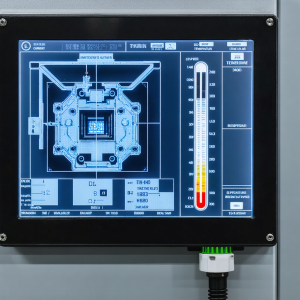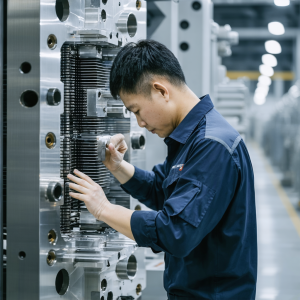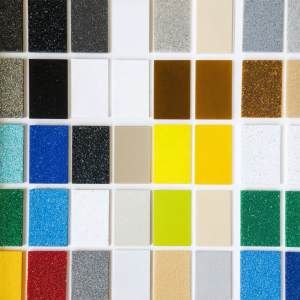
You’ve made the perfect mold, chosen the right material, and set everything up. Then, bam—warp city! The part doesn’t fit, it’s twisted, and now you’re stuck with plastic spaghetti instead of that precision part you envisioned. So, why does warping happen, and what can we do to keep things straight?
Warping in injection molding usually happens because of uneven cooling. When one area cools faster than another, it shrinks at a different rate, causing the whole part to twist or bend out of shape. To prevent warping, focus on even cooling, a balanced design, and precise control of temperature, pressure, and fill rates.
Let's look deeper at the key steps you can take to keep your parts on the straight and narrow.
Why Does My Part Keep Warping?
Injection molding is a balancing act between cooling, filling, and pressure. A minor imbalance, and suddenly, the plastic has a mind of its own.
Warping often results from uneven cooling or too-high fill rates. Try controlling both to reduce warp by setting uniform cooling times and designing molds with smooth flow channels.
Warping can be frustrating—trust me, I've been there. Whether the material pulls too tightly in one area or cools at an uneven pace, several root causes keep showing up.
Uneven Cooling:
- This is the main culprit. When one part of the mold cools faster, that area solidifies and shrinks more, pulling the rest of the part out of shape. I can’t emphasize enough the value of a good cooling system. Ensure the cooling channels are evenly spaced and run all the way around the mold.
Material Choice:
- Different plastics cool differently. Polypropylene (PP) shrinks more, for instance, while polycarbonate (PC) holds its shape better but needs higher temperatures. Know your material well, and you’re halfway to solving the problem. Consider fiber-reinforced options if warping is a recurring nightmare.
Design Considerations:
- Sharp corners, inconsistent thickness, and high-stress points? They’re all warp magnets. Try to keep part walls uniform and edges rounded. These design tweaks can go a long way in minimizing stress points and allowing for even cooling.
| Issue | Solution |
|---|---|
| Uneven Cooling | Add uniform cooling channels |
| High Fill Rates | Adjust fill speed and pressure |
| Inconsistent Thickness | Use fiber-reinforced materials |
Is My Cooling System the Problem?
It could be. A poor cooling system might save costs up front, but it’s a sure ticket to warped parts.
Check if the cooling system is evenly distributed across the mold. Adding extra cooling lines can sometimes fix persistent warping by promoting uniform cooling and controlled shrinkage.

Cooling in injection molding isn’t a set-it-and-forget-it kind of thing. Over time, I’ve learned that cooling needs to be revisited and sometimes completely revamped to keep up with new materials or tighter specs. To improve cooling:
Use advanced cooling lines: Optimize your channels to cool all sides evenly. Uneven channels are like only icing half a cake—not good for results.
Mold material: Some molds are made with different materials to allow faster, more consistent cooling. If warping’s a problem, consider upgrading mold materials.
Flow rate control: Just like adjusting your car’s AC to cool the whole cabin, your mold’s cooling rate can be adjusted for even cooling.
Does Part Shape Matter?
Absolutely! Part shape, thickness, and design features play into warping big-time.
Parts with sharp edges, inconsistent wall thickness, or irregular shapes warp more easily. A balanced, smooth design can drastically reduce warping issues in finished parts.
Odd shapes, thin walls, and sharp angles? They’re like putting a magnet near a compass. Warping gravitates toward them, and it takes some design finesse to balance everything out. Here are some practical changes I often make to avoid warping:
Uniform wall thickness: Keep wall thicknesses consistent to help control shrinkage across the part. A thicker wall here and a thinner one there is just asking for trouble.
Rounded corners: These not only ease flow during filling but also reduce stress that could lead to warping.
Flow-friendly designs: Simplify design wherever possible. Parts with unnecessary complexity are more likely to encounter stress-related warping. Consider splitting complex parts into multiple components if needed.
How Much Does Material Choice Affect Warping?
Material selection is the unsung hero in the war on warp.
Some materials naturally resist warping, while others—especially high-shrink plastics like PP—are warp-prone. Choose low-shrinkage materials for more consistent parts.

Material isn’t just a choice; it’s the foundation of the entire process. From nylon to polycarbonate, each material has a unique cooling rate, shrinkage factor, and tendency to warp. If you’re struggling with warping:
Know the shrink rate: PP shrinks more than polycarbonate, so if warping is a recurring issue, consider switching materials.
Fiber reinforcement: Reinforcing materials with glass or carbon fibers helps keep them stable and adds rigidity, making them less prone to distortion.
Environment considerations: Some materials respond poorly to temperature changes or moisture. Nylon, for example, can warp if it absorbs water. Be sure to store and dry materials properly before use.
Conclusion
Warping happens. But with the right cooling, material choice, and design, it’s completely manageable. Keep tweaking and adjusting until you find that sweet spot in the process—it’s worth it.
Post time: Oct-30-2024
